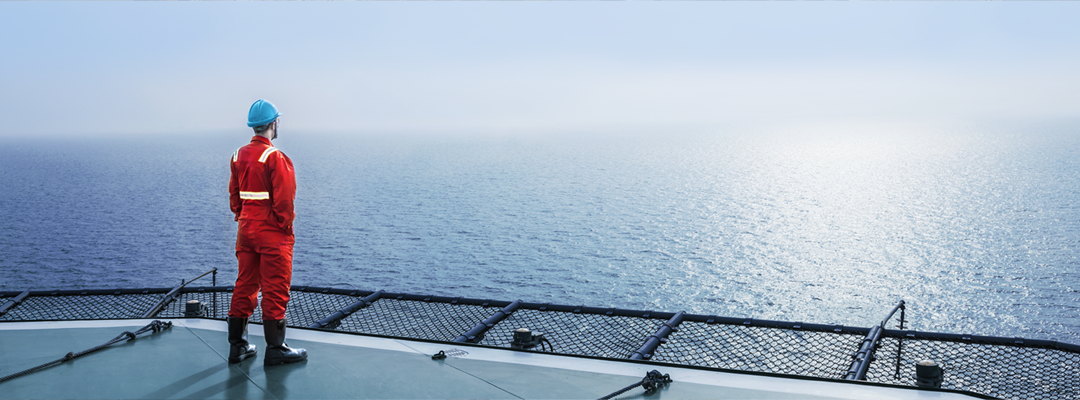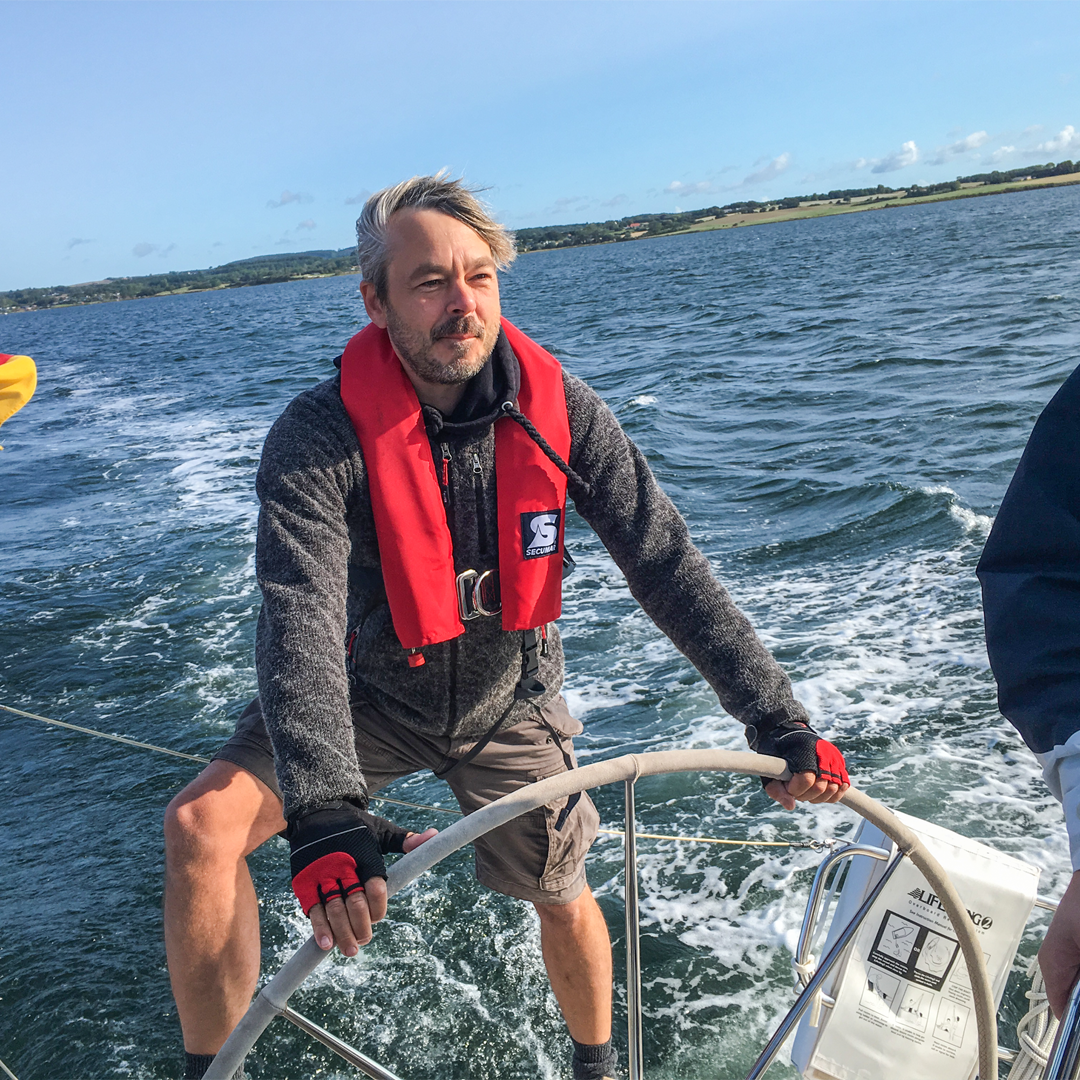
Magazine for the Annual Report
Breaking new ground for the oceans

SICK’s maritime applications segment is full of surprises. Two examples: The Sensor Ocean Conference not conforming to the usual model of online meetings, and employees gathering at a swimming pool to develop a new safety solution. This shows that throwing old patterns overboard can be fun – and successful.
The coronavirus pandemic is getting on everyone’s nerves – as are the online meetings that have shaped everyday work since the problem started. This was also the view of Hinrich Brumm, Strategic Industry Manager Combustion Engines and Maritime: “Most conferences simply consist of Power-Point presentations,” he says. “So we came up with the idea of organizing a live online event in which we presented our portfolio of maritime solutions without PowerPoint foils full of numbers and tables but instead making it as lively and interesting as possible – regardless of how. We set no limits on the imagination of those involved.”
Unconventional conference
Hinrich Brumm’s small team started work on the conference in January 2021: It recruited speakers, designed flyers, and stirred up interest via social media and SICK’s subsidiaries worldwide. The big day came on 16 September 2021: “When we went online in the morning we almost jumped for joy – there were 500 attendees from 300 companies in 58 countries!” says Brumm. During the morning, eleven teams made up of customers, partners and SICK employees presented their maritime solutions in 20-minute contributions – in the form of recordings from on board ship or from SICK works, installations, videos, live demonstrations, or interviews. Brumm and his colleague Ramona Richert, Strategic Program and Project Manager, moderated the conference. “All this was completely new for us,” he says. “It was really scary getting through it all. But it was worth it: The participants got very involved and used the opportunity to exchange information, and we were able to present our portfolio of solutions in an interesting and exciting way.”
The content of the Sensor Ocean Conference covered three major areas of application: Process and emission monitoring; digitalization with the possibilities opened up by sensor data; and the detection of persons, objects and hazards. In the latter topic area, a particularly sensational new solution was presented: SICK is currently developing a ‘man overboard’ application that will soon be ready to market.
The idea is based on a customer inquiry from Norway that we received in 2018. He asked whether SICK could develop a 3D scanner and downstream evaluation unit that identified, as accurately as possible, whether something falling overboard was an object or a person – and trigger an alarm in the case of ‘man overboard!’? The background: Although some ships and yachts are equipped with camera-based monitoring systems, the recordings are looked at only when someone is actually missing. But by then it is usually too late for any rescue.
The SICK team got to work: “First, we made a purely mathematical simulation with people falling through scanner fields. That looked very promising,” explains Markus Haas, Technical Industry Manager Power & Combustion/Maritime in the GIC Process Automation Department. But theory is always gray – the practical test came hot on its heels: “Our Hamburg colleagues carried out an initial experiment, throwing inflatable mannequins and boxes out of the window,” says Markus Haas. Another test run took place soon afterwards in Norway: Here, dummies were dropped into the sea from a crane.

The solution was intensively further developed during 2020, and initial talks were held with interested parties. But what we were still lacking was trials with real people.
And so it came about that an unusual event at the Denzlingen swimming pool (near Freiburg) took place in September 2020 – marking a high point in the development of the new application: Nine intrepid SICK employees tirelessly jumped all day long into (cold) water, sometimes from the 10-meter springboard. Their task: To ‘teach’ the artificial intelligence to recognize human forms falling through the scanner field within fractions of a second. Blankets, sunshades and air mattresses were also jettisoned for differentiation. “All this provided valuable data for further improving the algorithm,” explains Markus Haas.
SICK built the first prototypes of the solution in summer 2021 and put them through their paces in a rain channel. Further practical tests followed over months, for example on a ferry. The currently unique ‘man overboard’ solution is to be placed on the market next year, and should convince a wide range of users: It is not only conceivable for use on cruise ships (from which about 50 people actually disappear every year), passenger ships and ferries, but also on fixed houseboats, floating hotels, ports, bridges and drilling platforms. “There are great opportunities here,” Markus Haas is certain. “The courageous leap into the wild blue yonder – literally from the springboard, as well as in the sense that we have invested a lot of time and money in developing a new application – will definitely pay off. And this kind of unusual approach is fun!”
And this is exactly the way that Hinrich Brumm sees his Sensor Ocean Conference: “Despite all the work involved in the project – getting off well-trodden paths is wonderful, and actually makes great things possible in the first place!”







